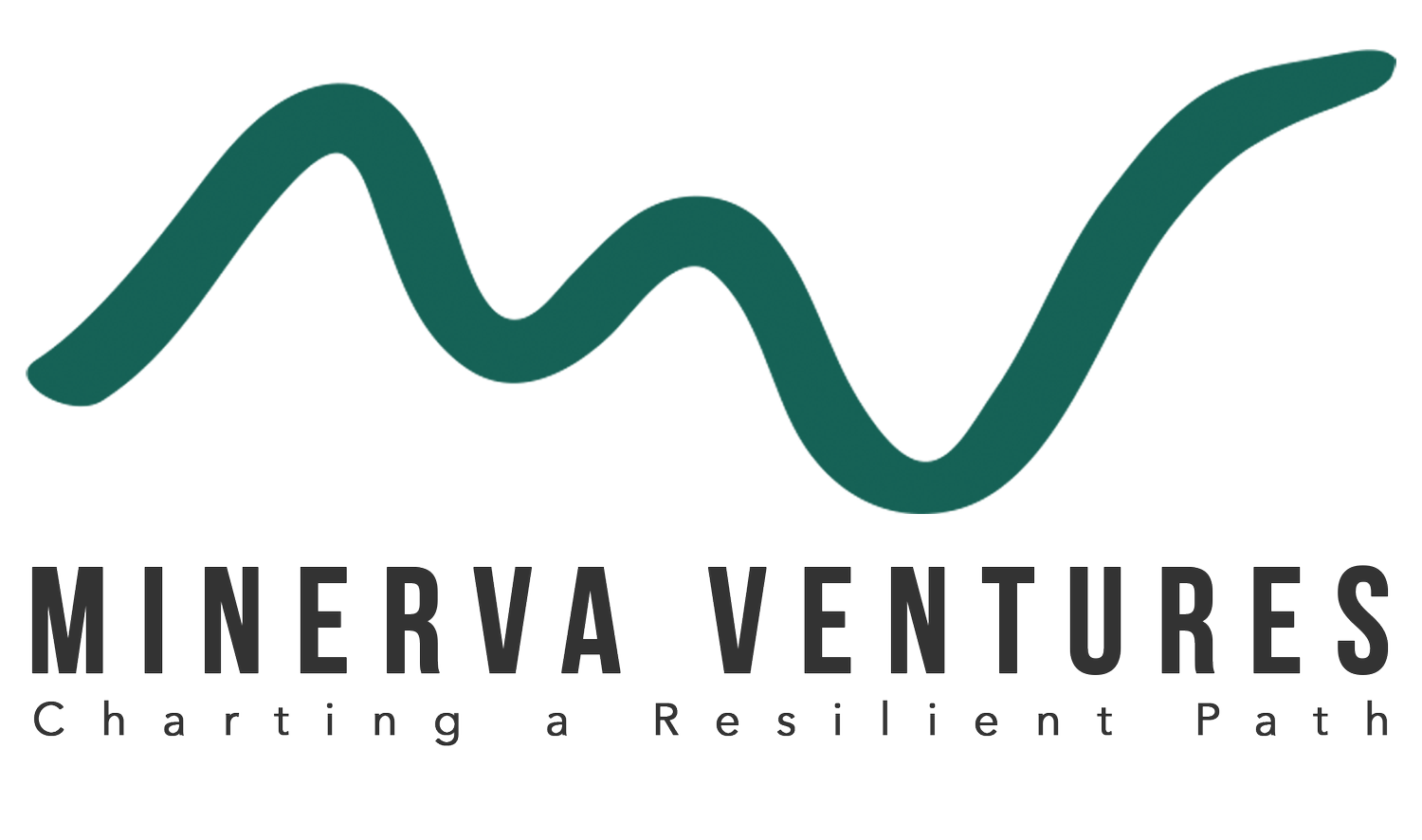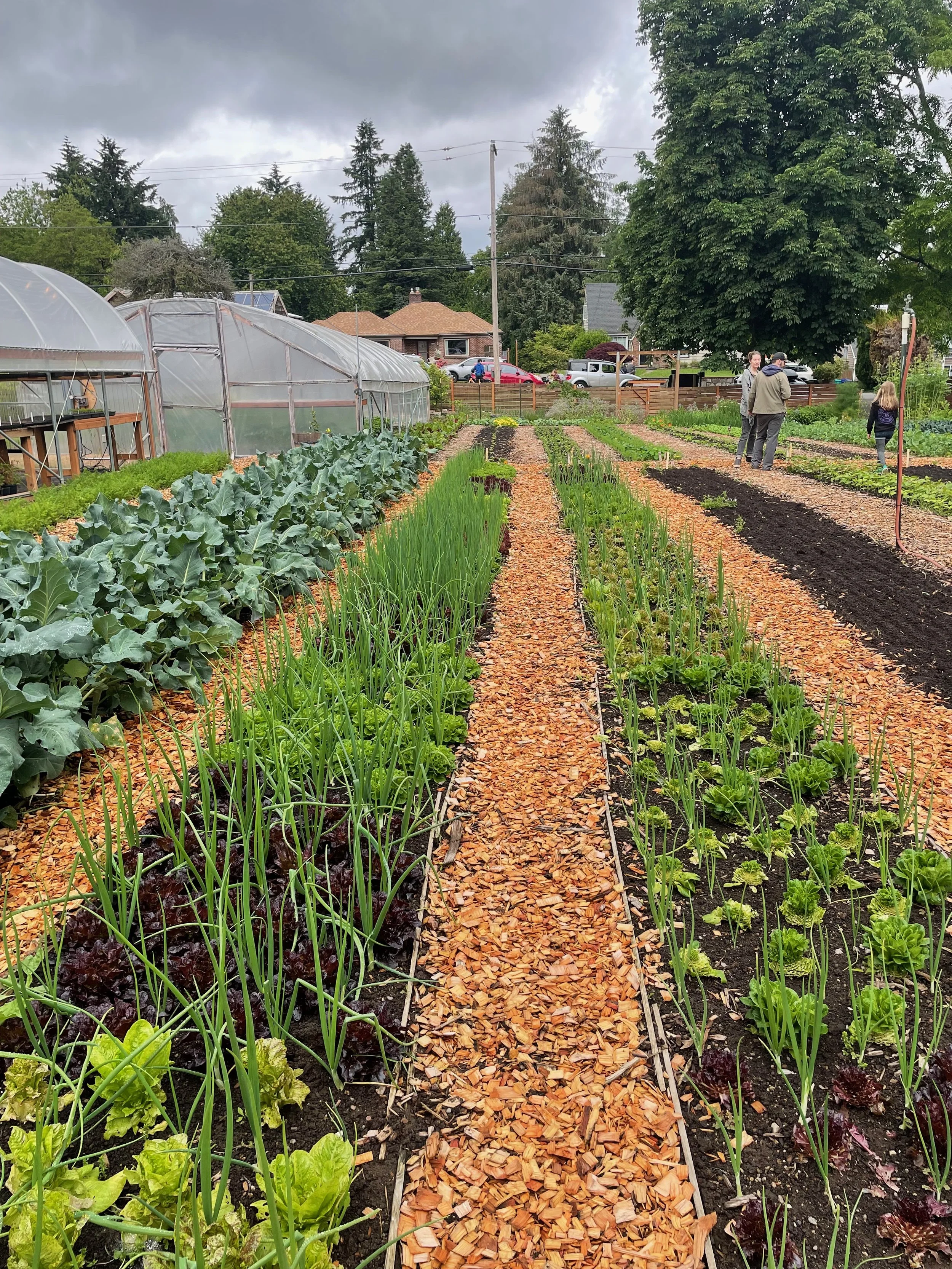Islands of Coherence
Urban farm in Portland, Oregon, photo by MGrossman 2022
Islands of Coherence
I had the honor of attending a virtual meeting of the Balaton Group in September. Members gave updates on their work. I left the meeting feeling more hopeful about how understanding the world from the perspective of complex systems can help us take meaningful action at a chaotic and frightening time.
Steven McFadden, a writer and healer from New Mexico shared this quote: “When a complex system is far from equilibrium, small islands of coherence in a sea of chaos have the capacity to shift the entire system to a higher order.” from Nobel Prize-winning chemist Ilya Prigogine, describing how small, orderly systems can emerge within larger, chaotic ones. These islands are pockets of organization, harmony, and shared intention that can potentially shift the entire system toward a higher order, even when the larger system is far from equilibrium. Minerva’s View strives to illuminate these centers of resilience.
Steven McFadden’s book Deep Agroecology: Farms, Food and Our Future, published in 2019, says “The ways we farm and the ways we eat will determine the destiny of life on earth. Farms and food are foundational for civilization. Right now, our civilization is undergoing massive upheaval. We must build a new foundation, and that imperative task is going to take all of us. Deep Agroecology shows the way. The union of native wisdom ways with sophisticated, sustainable tools and practices can lead to the renewal and the elevation of all forms of life on Earth. Our next, necessary evolutionary step depends on spiritual intelligent, regenerative agriculture: deep agroecology.”
Islands of Resilience
Dennis Meadows uses "islands of resilience" to refer to his strategy for adapting to the consequences of global overshoot, a concept he and his colleagues outlined in their 1972 book, The Limits to Growth (available to download as a pdf). Meadows argues that since achieving global sustainability is no longer possible, because we have overshot so many planetary boundaries, the focus must shift to building resilience at the local level. Community gardens, local currencies, and closed-loop cycles for resource/waste recovery and reuse are examples. (See the work of the Stockholm Resilience Centre and the Potsdam Institute for Climate Impact Research which uses the planetary boundaries framework for its Planetary Health Check, updated yearly. Find the 2025 report here.)
Happiness Work
Laura Muzikanski reported that the Happiness Alliance continues its work on measuring well-being around the world. Check out these resources:
Happiness Alliance well-being data: https://www.happycounts.org/for-researchers.html
For the Nepal report: https://www.ourheritageourhappiness.org/
For the work in Rwanda: https://onenatureinstitute.org/case-studies/
Applying Systems Science
Harald Sverdrup, Professor, Inland Norway University of Applied Sciences wrote a textbook for applying systems science to the world of policy and practice.
Systems Science and System Thinking in Practice: How to develop qualitative and numerical models for evolving understandings of challenges and responses to complex policies by Hördur Valdimar Haraldsson and Harald Ulrik Sverdrup, published by the Swedish Environmental Protection Agency, © Naturvårdsverket 2020.
From the introduction: To meet the challenges of the future, we need to possess knowledge on how to read and understand complex systems and understand how to use that knowledge to make positive changes. This understanding comes through systems thinking and systems analysis approaches towards problem solving and solutions. This publication describes and explains systems thinking and systems analysis for experts and non-experts, from policy makers to policy analysts. The authors, Hördur V. Haraldsson (Swedish Environmental Protection Agency) and Harald U. Sverdrup, (Department of Game Development, Inland Norway University of Applied Sciences) are responsible for the content.
Professor Sverdrup’s research includes analyzing the availability of critical resources such as gallium (a metal used in PV, semiconductor and other applications) and its mining, recovery and use under four future scenarios.
https://link.springer.com/article/10.1007/s41247-025-00125-7
“The gallium resources were assessed and used as input to long-term simulations using the WORLD7 model.… This poses a major challenge to future plans for an energy transition, where under Business-as-usual (BAU), such a transition will remain hypothetical. The four EEA imaginaries, Ecotopia, The Great Decoupling, Unity in Adversity, and Technocracy for the Common Good, offer different policy pathways for managing future gallium scarcity through varying degrees of technological advancement, resource conservation, and avoidance strategy.”
Nora Mžavanadze, is a contributing author to Keeping the World’s Environment under Review: An Intellectual History of the Global Environment Outlook, published in 2022 on keeping the global environment under review (Open access).
How do we take stock of the state and direction of the world’s environment, and what can we learn from the experience? Among the myriad detailed narratives about the condition of the planet, the Global Environment Outlook (GEO) reports—issued by the United Nations Environment Programme—stand out as the most ambitious. For nearly three decades the GEO project has not only delivered iconic global assessment reports, but through its multitude of contributors has inspired hundreds of similar processes worldwide from the regional to the local level. This book provides an inside account of the evolution of the GEO project from its earliest days. Building on meticulous research, including interviews with former heads of the United Nations Environment Programme, diplomats, leading contributing scientists, and senior leaders of collaborating organizations, the story is told from the perspective of five GEO veterans who all played a pivotal role in shaping the periodic assessments.
Linda Juhasz-Horvath works for the World Health Organization (WHO) in Budapest, Hungary, studying perinatal impacts of heat and climate. She and colleagues created a playful and accessible video about systems thinking.
Betty Sue Flowers reported on the work of Women Transforming Global Security which looks at nuclear weapons and climate change with a goal of sustainable solutions. It is a groundbreaking alliance of distinguished women leaders pioneering a comprehensive framework for addressing interconnected global threats. They unite the expertise of former heads of state, senior policymakers, and emerging leaders to advance feminist principles of collaborative problem-solving, long-term thinking, and collective intelligence in service of human and planetary security.
Isak Stoddard of Uppsala University in Sweden, described his Ph.D. thesis: Perilous Times: Carbon Budgets and the Cosmopolitics of Climate Mitigation “The findings of this thesis collectively suggest that our times are perilous in at least three ways: In the escalating effects of the climate crisis, in the responses conceived to address the problem, and in the forms of attention that the accompanying temporalities give rise to.” Despite increasingly emphatic warnings from climate scientists, the world’s response to climate mitigation has been woefully inadequate. Stoddard explores the barriers to effective action at the national, regional and local levels.
Alan Atkisson's reflection made Isak think of this passage by Deep ecologist Arne Naess: Deep Ecology for the 22nd Century by Arne Naess
“Not my title! Why did my friends insist on that title? Because of my many conversations of this kind:
NN: Are you an optimist or a pessimist? AN: Optimist! NN: (Astonished) Really? AN: Yes, convinced optimist—When it comes to the 22nd Century. NN: You mean of course the 21st? AN: 22nd! The life of the grandchildren of our grandchildren. Are you not interested in the world of your grandchildren! NN: You mean we can relax because we have a lot of time available to overcome the ecological crisis? AN: How terrible, shamefully bad conditions will be in the 21st Century, or how far down we have to start on the way up, DEPENDS ON WHAT YOU, YOU, and others do today and tomorrow. There is not a single day to be lost. We need activism on high level immediately.”
Multisolving
Elizabeth Sawin, of the Multisolving Institute, shared about Seeds of the Future, an approach that is reweaving systems that have been marginalized, partnering with mainstream science. One example of multisolving in action is explained by David Munezero of Rwanda who developed the Regenerative Life Gardens. He writes, “Our world is facing an unprecedented convergence of crises: climate breakdown, economic inequality, food insecurity, youth unemployment, biodiversity collapse, and social fragmentation.
We can no longer afford siloed solutions. Multisolving is not a luxury—it’s a necessity. It’s the only way we can design systems that work for people, for the planet, and for future generations.
The Regenerative Life Garden doesn’t ask people to choose between eating and acting on climate. It doesn’t ask youth to pick between healing and earning. It says: Let’s do both. Let’s do it all. Together.
Multisolving showed me that I wasn’t alone. That there is a global movement of people designing integrated, inclusive, regenerative responses to the crises of our time. It gave me hope, the language, the framework, and the confidence to fully embrace my work.”
Katalin Czippan is integrating indigenous knowledge into nature-based education through several Hungarian and international organizations, including The International Union for Conservation of Nature (IUCN), where she co-chairs the IUCN Commission on Education and Communication (CEC). She participated in the IUCN World Conservation Congress in Abu Dhabi, United Arab Emirates in October 2025. Here is their call to action.

